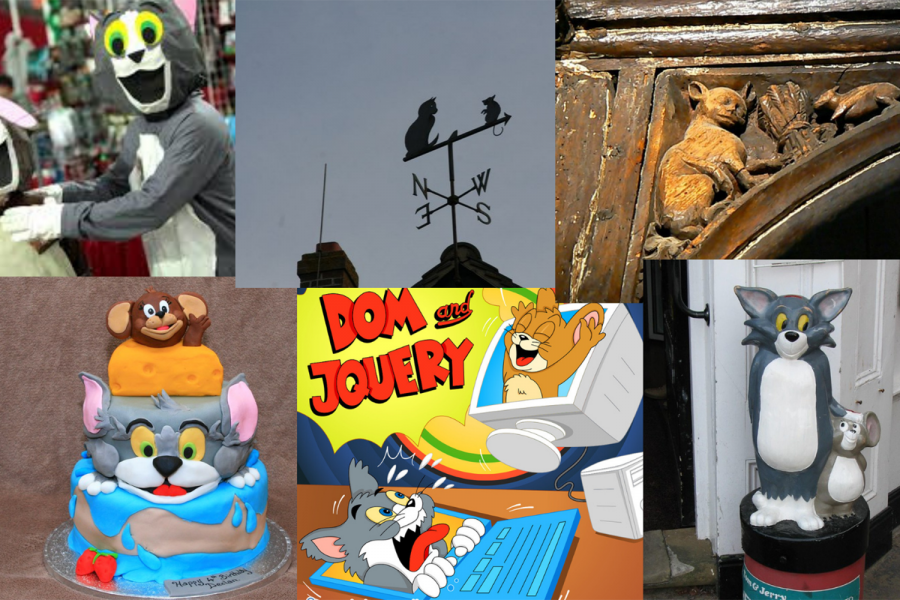“Tom and Jerry,” a feckless live-action/animation hybrid directed by Tim Story, tries to update the classic Tom versus Jerry tale but sadly loses sight of its source material by neglecting its title characters.
The film begins with Jerry moving into a lavish New York City hotel just as newly unemployed Kayla (Chloë Grace Moretz) arrives to apply for a job. Desperate for a job, she tricks the managers into hiring her to help plan a high-profile wedding. After spotting Jerry (voiced by Frank Welker) stealing from the kitchen, Kayla hires Tom (also voiced by Frank Welker) to capture Jerry before the big event.
Surprisingly, the plot seems to veer away from the eponymous cat and mouse, choosing to focus on Kayla as she struggles to keep the job she got by stealing someone else’s identity. There are a few scenes that include Tom and Jerry’s traditional antics, but the majority of the film revolves around Kayla, the hotel and the wedding of two A-listers, played by Pallavi Sharda and Colin Jost.
Every character seems to have their own agenda, all of which are forgotten as the focus constantly returns to Kayla, who is stuck trying to solve all the problems that plague the hotel. With a human character at the helm of the plot, all the childish amusement that typically goes hand-in-hand with Tom and Jerry’s wild antics is lost.
This becomes particularly apparent in the film’s strange decision to eliminate the iconic chase scenes the franchise is known for. The exclusion of these sequences erases the physical comedy that the original cartoons focused on. Additionally, the lackluster verbal quips scattered throughout the movie to compensate for the absence of physical comedy makes you miss the chase sequences all the more.
Even worse, the film avoids giving Tom and Jerry any personality. Without the classic cat-and-mouse chases, many of the characters’ traits don’t have a chance to shine. Jerry is unable to show how clever and tactful he is — instead of using elaborate schemes to trick Tom, he is relegated to taunting Tom with objects that appear out of thin air. Tom also falls short, possibly because his relationship with Jerry lacks the “best of enemies” dynamic that has historically fueled the franchise. Without a sense of persistence, he only seems to chase Jerry so he can continue living in his hotel.
As the film progresses, it becomes evident that none of the characters will develop. Much of the trouble they cause, such as stealing food and destroying hotel rooms, go overlooked and unresolved. The film attempts to conclude with a happy ending, but only leaves viewers confused with many questions about the characters and their futures.
The technical efforts throughout “Tom and Jerry” fail to reveal anything about the characters and their settings. It seems as though all of these elements — cinematography, editing, lighting and sound — were added out of necessity and not given any attention or importance.
As for the music, there was an interesting blend of R&B, hip-hop and classical music throughout the film. Yet, the score did not always match the actions and tones throughout the film — at one point, the canonically mute Tom starts singing, voiced by rapper T-Pain. The scene is laughable for all the wrong reasons, muddling the plot and making the viewer question if the humans around Tom can hear him.
“Tom and Jerry” ineffectively combines live-action and animated elements. The two-dimensional drawing style did not contrast well with the natural scenery and actors. The flat dullness of the animation was jarring in comparison to the bright reality of the live-action portions. Sometimes props were cartoons; other times, they were real objects. The hybrid use of animation and live-action was executed poorly and inconsistently—more often than not, it only made it hard to discern what the human characters could see and interact with.
Animation and live-action styles have been combined successfully in classics such as “Space Jam” and “Who Framed Roger Rabbit.” The animation in both of these films creates an imaginative, whimsical world that is still in touch with reality because of the consistency between the animated characters and the human ones. “Tom and Jerry” blurs the lines between imagination and reality in a way that is confusing and displeasing to the eye.
“Tom and Jerry” had all the resources to be a funny and entertaining hit, but the film’s misuse of its titular characters, supporting actors, animation and music causes it to miss the mark. The film not only disregards the essence of the original “Tom and Jerry” shorts, but does so by creating a film that lacks emotion, depth and style.
Email Saige Gipson at [email protected].


























































































































































